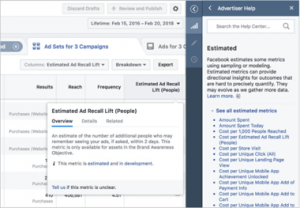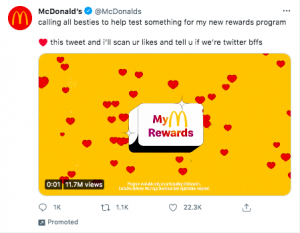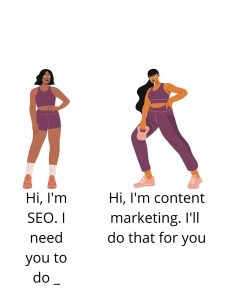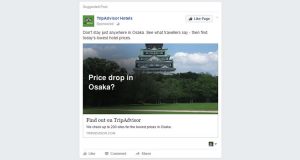 If you are a reader of this blog then you know we spend a lot of time talking about how to make your field teams more efficient and effective, and how to leverage your field resources to provide insights to your business that you can’t get without ‘feet on the street’. It occurred to me while participating in a panel discussion hosed by the World Alliance for Retail Excellence & Standards last week that there may be a lot of questions about how to go about building a Field Marketing/Merchandising team, particularly among entrepreneurs bringing new products to market. We’ve made the point that great products don’t necessarily sell themselves; consumers have to know about them, be interested in them and be able to find them. You have to support them with marketing outside the store, and probably more importantly inside the store, and you need someone to make sure that your Retail Execution plans are being carried out at the shelf.
If you are a reader of this blog then you know we spend a lot of time talking about how to make your field teams more efficient and effective, and how to leverage your field resources to provide insights to your business that you can’t get without ‘feet on the street’. It occurred to me while participating in a panel discussion hosed by the World Alliance for Retail Excellence & Standards last week that there may be a lot of questions about how to go about building a Field Marketing/Merchandising team, particularly among entrepreneurs bringing new products to market. We’ve made the point that great products don’t necessarily sell themselves; consumers have to know about them, be interested in them and be able to find them. You have to support them with marketing outside the store, and probably more importantly inside the store, and you need someone to make sure that your Retail Execution plans are being carried out at the shelf.
Since there are several strategies for building field teams, and each has its own pros and cons that affect their suitability for a particular business, I’ll go into some detail on each one over the next few weeks. Today we’ll just touch on the most common approaches as a sort of ‘Primer’ on field teams.
First, a bit of advice.
Several years ago I worked on a major mobile initiative for a merchandising team of 2,700 field reps. It was a multi-year, multi-million dollar project that proved to bring great efficiencies to the entire organization. I found out a few years later that the entire team had been outsourced, and was told that if history was any indicator, that the whole team would be back in house within a few years. It turned out that with every change in senior management came a new opinion on what the best practice was for field merchandising teams, and proved to me that there is no absolute right or wrong approach. The best approach for your business can change as your company grows and evolves. In my opinion, the best practice is be informed about the options that exist, and to periodically review your own practices to make sure that the approach that you are following is best aligned with your objectives; don’t be afraid to make changes as your business develops.
Now, on to the approaches.
In house/Full Time
Hiring your own team to regularly visit retail outlets in their territory gives you a dedicated set of resources that you control. You can motivate them to represent your products as passionately as you would if you were visiting every shelf yourself, and they will give you consistent and predictable coverage. These are great values, but don’t underestimate the hidden costs of recruiting, hiring, training and managing the team, or the effort that it will take to keep the team focused on an ever changing set of priorities.
In House/Part Time
Building a part time field force, often staffed with ‘Soccer Moms’, Retirees and College Students, can give you the flexibility to control payroll costs by expanding and contracting the field work to align with your initiatives. Often these workers can be very loyal, particularly if they can have some flexibility in their schedules; other times they can represent high turnover, which brings higher costs to train and manage the team.
Outsourced to Broker
Most CPG brokers offer services beyond the basic sales relationships that they concentrate on. Many brokers maintain a team of merchandisers that can support the brands that the broker represents. This can be a very cost effective way to build a team, as the broker has a vested interest in maximizing sales of your product at retail, and you effectively share the costs of the personnel across several brands. On the downside, there may be questions about the focus and passion that these reps commit to your products, and about how much flexibility you have in the control of these reps’ specific activities.
Outsourced to Merchandising Agency
Merchandising Agencies, also known as Third Party Merchandisers (TPMs) or Merchandising Service Organizations (MSOs) specialize in providing field teams of merchandisers. They take on all of the challenges of building and training the team, and can offer a lot of flexible arrangements such as dedicated teams, shared resources and temporary ‘surge’ teams to drive specific initiatives. They can also bring a lot of experience and ideas about how to best position your products for success. The potential drawbacks are similar to those of using a Broker’s merchandising team, with the additional issue that their ‘vested interest’ is in the fees that they charge, and it may be difficult to tie their performance directly to your product sales.
As you can see, there is no single right approach, and there are easy arguments that can be made for any one, or even a hybrid of these strategies. The best thing that you can do is to be informed about the various options, and to re-evaluate which is right for you as your business evolves.
Check back over the coming few weeks as I mix my own opinion with those of other industry leaders in full posts dedicated to each of these approaches to building your field team.
(287)







